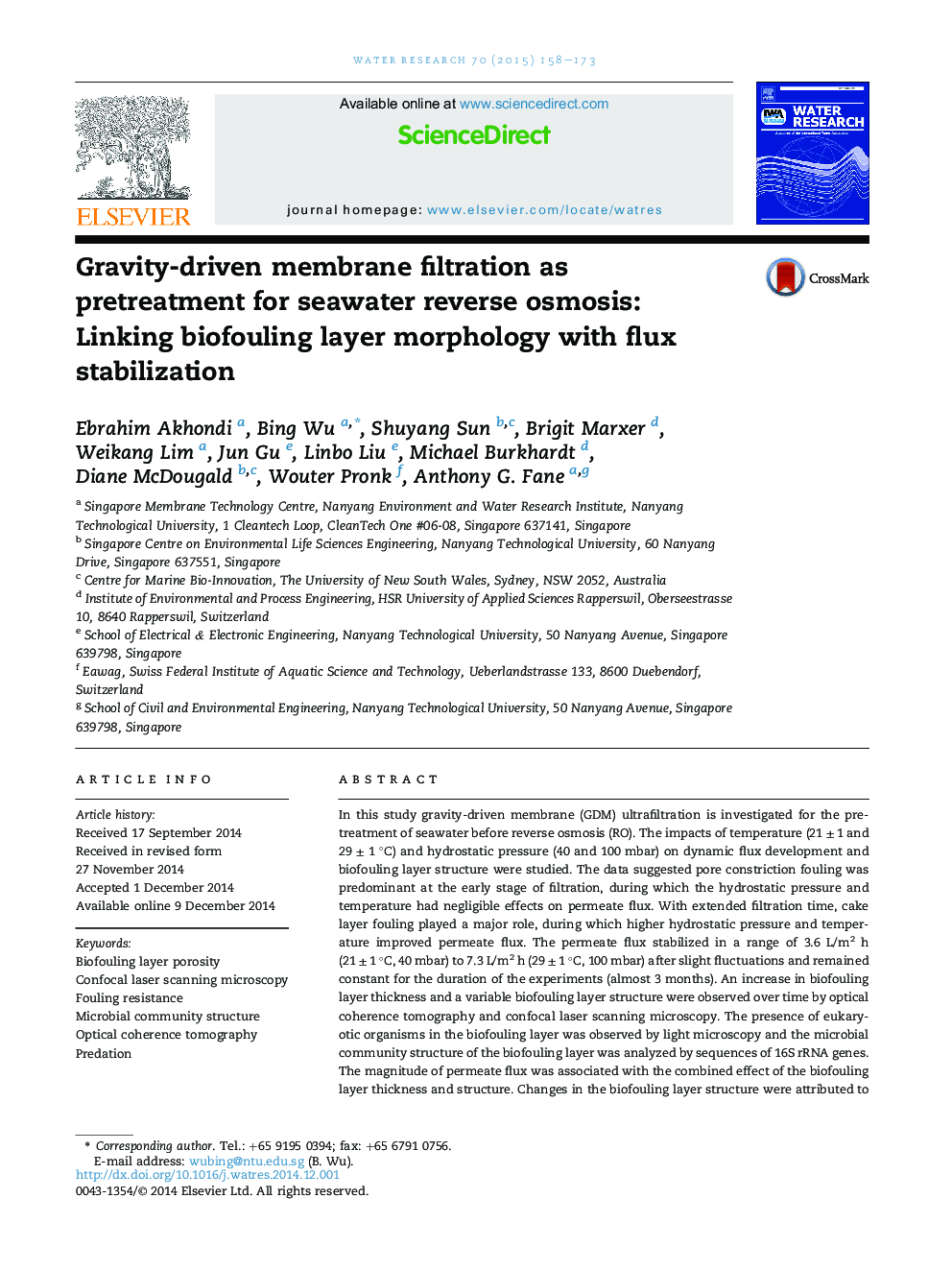| کد مقاله | کد نشریه | سال انتشار | مقاله انگلیسی | نسخه تمام متن |
|---|---|---|---|---|
| 4481302 | 1623098 | 2015 | 16 صفحه PDF | دانلود رایگان |
• GDM filtration has a potential as an RO pretreatment process.
• Increasing temperature and hydrostatic pressure improved permeate flux.
• Cake layer fouling played a major role during flux stabilization.
• The presence of eukaryotes increased heterogeneous nature of the biofouling layer.
• The biofouling layer thickness and structure determined the flux magnitude.
In this study gravity-driven membrane (GDM) ultrafiltration is investigated for the pretreatment of seawater before reverse osmosis (RO). The impacts of temperature (21 ± 1 and 29 ± 1 °C) and hydrostatic pressure (40 and 100 mbar) on dynamic flux development and biofouling layer structure were studied. The data suggested pore constriction fouling was predominant at the early stage of filtration, during which the hydrostatic pressure and temperature had negligible effects on permeate flux. With extended filtration time, cake layer fouling played a major role, during which higher hydrostatic pressure and temperature improved permeate flux. The permeate flux stabilized in a range of 3.6 L/m2 h (21 ± 1 °C, 40 mbar) to 7.3 L/m2 h (29 ± 1 °C, 100 mbar) after slight fluctuations and remained constant for the duration of the experiments (almost 3 months). An increase in biofouling layer thickness and a variable biofouling layer structure were observed over time by optical coherence tomography and confocal laser scanning microscopy. The presence of eukaryotic organisms in the biofouling layer was observed by light microscopy and the microbial community structure of the biofouling layer was analyzed by sequences of 16S rRNA genes. The magnitude of permeate flux was associated with the combined effect of the biofouling layer thickness and structure. Changes in the biofouling layer structure were attributed to (1) the movement and predation behaviour of the eukaryotic organisms which increased the heterogeneous nature of the biofouling layer; (2) the bacterial debris generated by eukaryotic predation activity which reduced porosity; (3) significant shifts of the dominant bacterial species over time that may have influenced the biofouling layer structure. As expected, most of the particles and colloids in the feed seawater were removed by the GDM process, which led to a lower RO fouling potential. However, the dissolved organic carbon in the permeate was not be reduced, possibly because some microbial species (e.g. algae) could convert CO2 into organic substances. To further improve the removal efficiency of the organic carbon, combining carrier biofilm processes with a submerged GDM filtration system is proposed.
Figure optionsDownload high-quality image (328 K)Download as PowerPoint slide
Journal: Water Research - Volume 70, 1 March 2015, Pages 158–173
